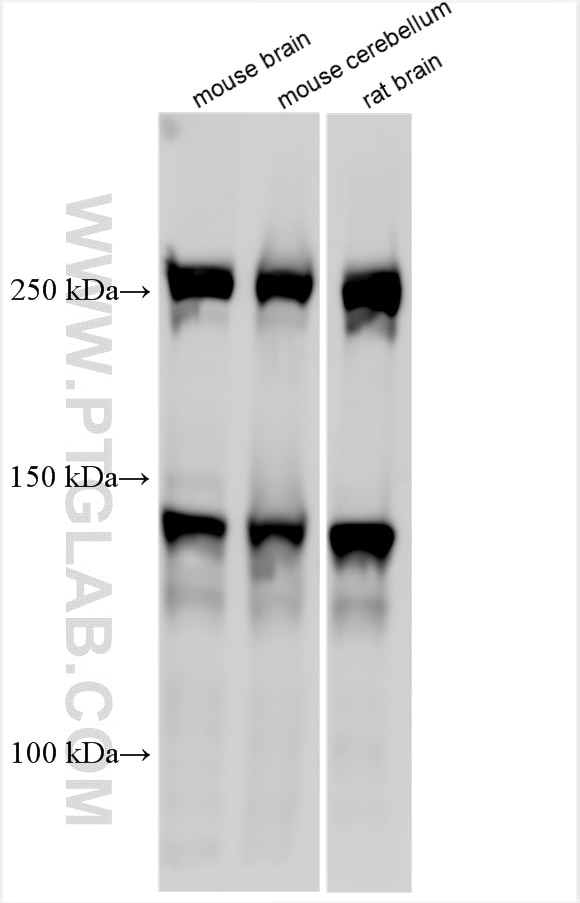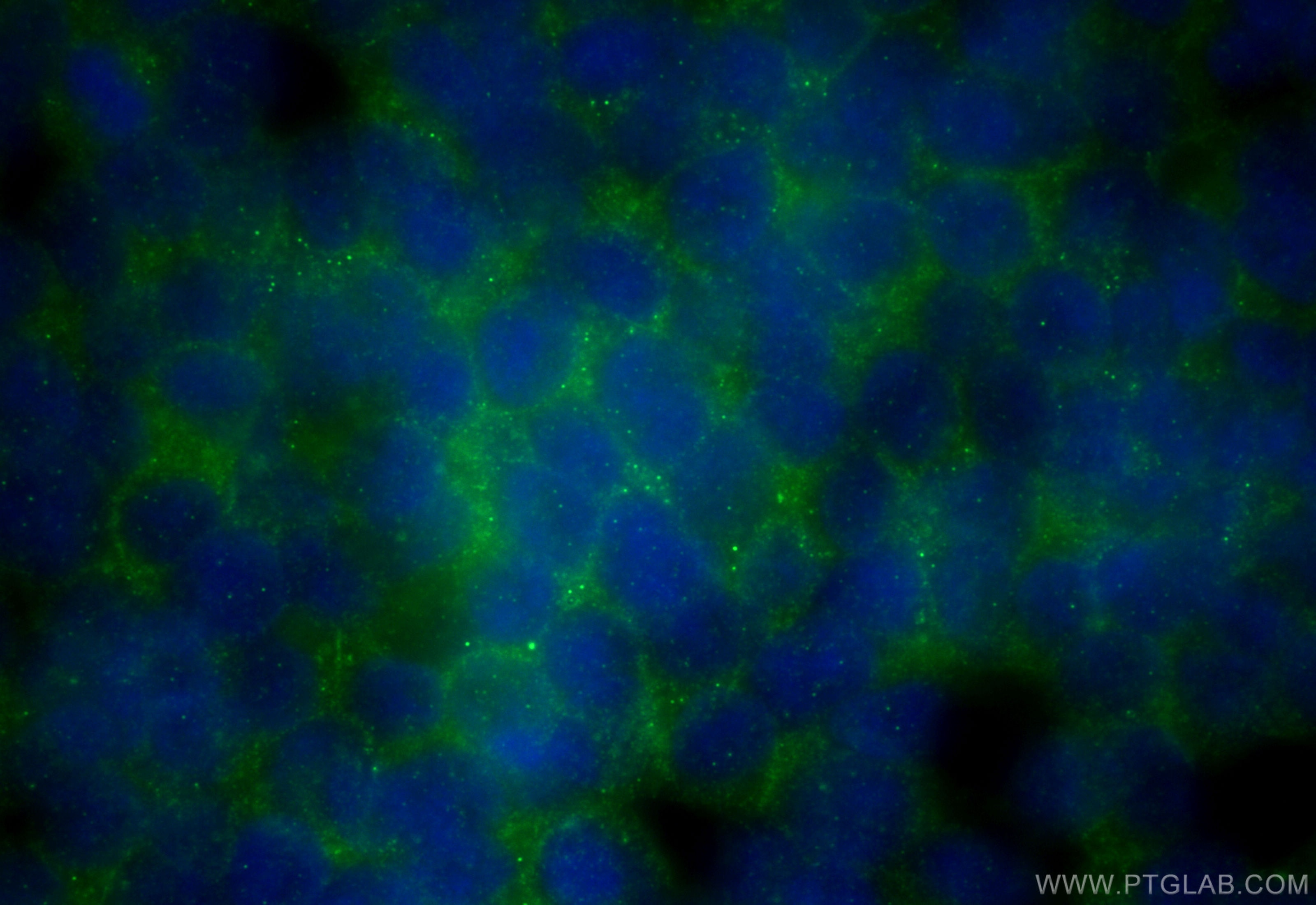Tested Applications
| Positive WB detected in | mouse brain tissue, mouse cerebellum tissue, rat brain tissue |
Recommended dilution
| Application | Dilution |
|---|---|
| Western Blot (WB) | WB : 1:500-1:1000 |
| It is recommended that this reagent should be titrated in each testing system to obtain optimal results. | |
| Sample-dependent, Check data in validation data gallery. | |
Product Information
31713-1-AP targets SPTBN4 in WB, ELISA applications and shows reactivity with human, mouse, rat samples.
| Tested Reactivity | human, mouse, rat |
| Host / Isotype | Rabbit / IgG |
| Class | Polyclonal |
| Type | Antibody |
| Immunogen | SPTBN4 fusion protein Ag36430 Predict reactive species |
| Full Name | spectrin, beta, non-erythrocytic 4 |
| Calculated Molecular Weight | 288kDa |
| Observed Molecular Weight | 250, 140 kDa |
| GenBank Accession Number | NM_020971 |
| Gene Symbol | SPTBN4 |
| Gene ID (NCBI) | 57731 |
| RRID | AB_3670092 |
| Conjugate | Unconjugated |
| Form | Liquid |
| Purification Method | Antigen affinity Purification |
| UNIPROT ID | Q9H254 |
| Storage Buffer | PBS with 0.02% sodium azide and 50% glycerol , pH 7.3 |
| Storage Conditions | Store at -20°C. Stable for one year after shipment. Aliquoting is unnecessary for -20oC storage. 20ul sizes contain 0.1% BSA. |
Background Information
SPTBN4 also known as beta-IV spectrin, encodes a nonerythrocytic member of the beta-spectrin protein family that is expressed in the brain, peripheral nervous system, pancreas, and skeletal muscle. Spectrins are rod-shaped proteins that were originally identified as part of the lattice-like cytoskeleton under the erythrocyte membrane(PMID: 11086001).
Protocols
| Product Specific Protocols | |
|---|---|
| WB protocol for SPTBN4 antibody 31713-1-AP | Download protocol |
| Standard Protocols | |
|---|---|
| Click here to view our Standard Protocols |





